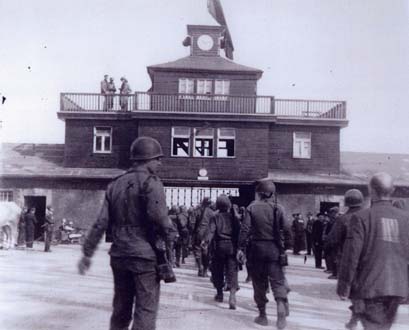Buchenwald concentration camp was the first to be liberated by the Allies in April 1945, at the end of World War Two.
The US Army’s 6th Armoured Division reached the camp on 11th April and released its prisoners – the first to be freed from the Nazis.
Buchenwald was found to be the largest of the Nazi camps, which featured several sub-camps.
There were around 250,000 prisoners interned at the camp over eight years. It is thought that more than 50,000 people were killed at the camp.
US troops reached one of Buchenwald’s sub-camps called Ohrdruf a week earlier. But before the Allies arrived the SS guards guarding the camp ordered all prisoners to be evacuated and they attempted to burn as much evidence as possible.
Prisoners began to be transported by train or marched on foot across Germany into occupied territory and away from the incoming Allied troops. Many died along the way and the evacuations became known as death marches. Around 28,000 prisoners were evacuated.
When US troops arrived at the camp most German soldiers had fled and prisoners had taken over the camp, killing any remaining guards. Around 20,000 prisoners still remained at the camp.
Sadly, the camp was taken over by incoming Soviet troops and it became a prisoner came for the Soviet Union for another five years after the war. Soviet records show that around 30,000 prisoners were kept at the camp and around 7000 died during the five years.
In 1950 the camp was at last destroyed and was handed over to the East German authorities. Only the main gate, crematorium, part of the hospital and two guard towers were kept.
Buchenwald had actually been a working camp, rather than a camp for extermination. However due to the terrible conditions prisoners died from lack of food, disease, torture and being overworked.
Buchenwald was built in 1937 and was originally intended to house political prisoners who were against the Third Reich, The Local reports.
At the time of liberation, its prisoners included Jews, gays, prisoners of war, people with mental difficulties, the homeless and people of eastern European descent.
Many experiments were also conducted at the camp, including scientists’ attempt to ‘cure’ homosexuality. Upon liberation, American troops forced local German citizens to visit the camp and see what had happened in their own country.
